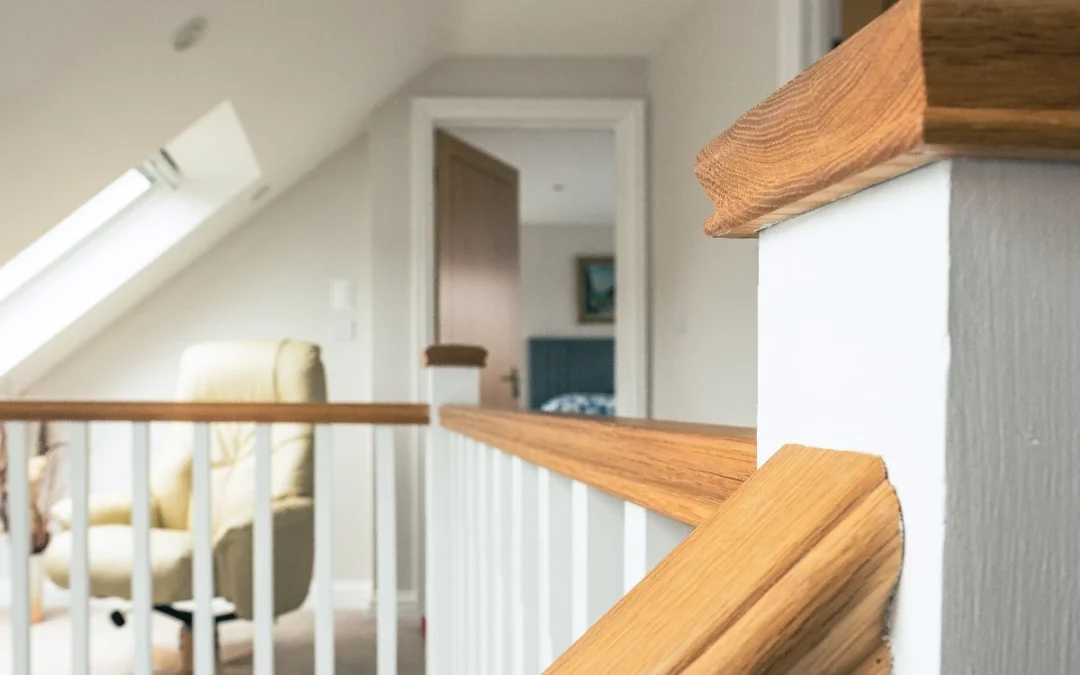
Loft Conversion Building Regulations
Building regulations and planning permission are often misunderstood – but both are essential for any loft conversion project, ensuring your loft space has been approved before construction and that the build and design comply with all the local authority requirements.
In short, building regulations cover the health and safety aspects of a loft conversion and relate to factors such as energy efficiency, fire safety and the technical structure of a building. In contrast, planning permission may depend on the aesthetic and style of your home and whether converting the loft would impact your neighbours.
Today, we’re focusing on building control and will explain the basic rules to ensure your planned loft conversion meets all the essential criteria.
What Are the UK Building Regulations for Loft Conversions?
The first aspect to clarify is that when you work with an experienced, highly qualified contractor, we can advise on loft conversion building regulations and provide support with creating designs, structural specifications and construction plans.
We also ensure that the assigned local building control inspector who visits the site to evaluate the work has all the information they need to approve the conversion.
While homeowners should understand building regulations and why these might impact their design ideas, we wouldn’t necessarily expect every client to have an in-depth grasp of every nuance. However, as a guideline, we’ve run through some of the primary requirements below to give you an idea about the areas covered.
Essential Design Elements of a Loft Conversion for Building Regulations
Some properties are better suited to a loft conversion than others, with these projects often ideal for semi-detached houses and terraced houses where there isn’t space to extend outwards.
You’ll need to ensure your conversion has a head height of 2.2 metres as a minimum within the usable space – although more generous space is recommended. It’s worth looking at the angle of your roof structure, with a steeper roof providing more capacity to introduce habitable space.
Next, you’ll need to look at any alterations where you have a water tank or other components of your central heating system installed in your loft. These will need to be disconnected and relocated before any conversion work can begin.
Loft conversions within terraced houses that are likely to impact a neighbour may require a party wall surveyor before you think about loft conversion building regulations approval. A surveyor can draw up a party wall notice to notify your neighbour(s) of your plans and address any concerns well in advance.
Roof Windows and Doors
Any dormer loft conversion, or alternative conversion type, should incorporate windows to introduce sufficient natural light to provide a liveable space. Building control standards state that those windows must be large enough to act as an emergency escape route and should be at least 45 x 45 cm. Dormer windows or roof lights should open from the top of the glazing and be between 80 cm and 110 cm from the floor.
If existing doors connect your ground and first-floor habitable rooms, these should be solid or fire-rated doors that can withstand a fire for at least 20 minutes.
Fire Safety Regulations
Leading on from the building regulations for doors, several other components of your loft conversion must be fire safety compliant:
- Joists must be specified to provide at least 30 minutes of protection from fire, which may mean that the ceilings in the rooms beneath the conversion require new plasterwork.
- Your loft room must have a fire door at either end of the staircase connecting the storey below with the additional floor.
- Every floor needs to have integrated mains powered smoke alarms – meaning if one smoke alarm is activated, all the alarms will sound.
These regulations are the most extensive, and a building control officer will often ask for documentation to prove that, for example, fire doors are safety rated.
Insulation and Energy
If you’re keen to add another storey to your home, you will need to budget for sound insulation – this is all part of the legislation that prevents anybody from constructing a loft room that isn’t safe or suitable for use as a bedroom. You may need additional insulation if your plans will mean removing existing roof insulation within the loft living space.
Electrics wired into the new loft space, such as lighting or heating, need to receive building control approval. Depending on variables such as your property’s size and current electrics, you might need your contractor to install a new consumer unit to accommodate the extra connections or appliances.
Bathrooms and Plumbing
Loft rooms with an en suite bathroom must comply with building regulations, where the lights and switches within a bathroom are suitable for use in these spaces, and you have enough ventilation to prevent mould or moisture from causing a potential health hazard.
Staircases Up to Your New Floor
Converting an existing roof space in a two-storey house normally means you’ll need a protected stair enclosure – rather than an open or spiral staircase leading up to the loft room. That enclosure should connect to an external door.
The focus is safety; you can build an enclosed staircase or have a small lobby area at the bottom with fire-resistant doors. If you have an open plan property, you can use a consistent theme for your converted loft staircase but will usually need extra fire safety measures such as a sprinkler system.
Floors and Support Beams
Finally, any loft conversion building plan needs to include new floor joists that are strong enough and have sufficient load-bearing capacity to manage the weight of the additional storey, usually requiring extra joists following an assessment by a structural engineer.
Joists come in many sizes, densities and grades, so these measurements are an essential part of the planning process, ensuring your load-bearing walls and existing ceiling joists sit alongside reinforcements.
If you’re adding a new vertical wall within the loft, this should be graded to the right load-bearing capacity according to loft conversion building regulations to account for the removal of existing roof supports.
How to Ensure Your Loft Conversion Is Fully Compliant With Building Regulations
As you can see from our summaries above, building regulations cover a broad array of areas. Your plans should be overseen by an experienced, qualified construction specialist with knowledge of the regulatory requirements and how these might apply to your home.
The first step is to arrange a good time to chat with one of the Pinnacle Works team where we can discuss your ideas, offer further information, and start working on building regulations drawings and diagrams.
We can advise on elements of your planned conversion, whether you’re planning a simple dormer loft conversion, a full hip to gable loft extension, or using a mansard loft conversion to add a complete extra storey to your home.

